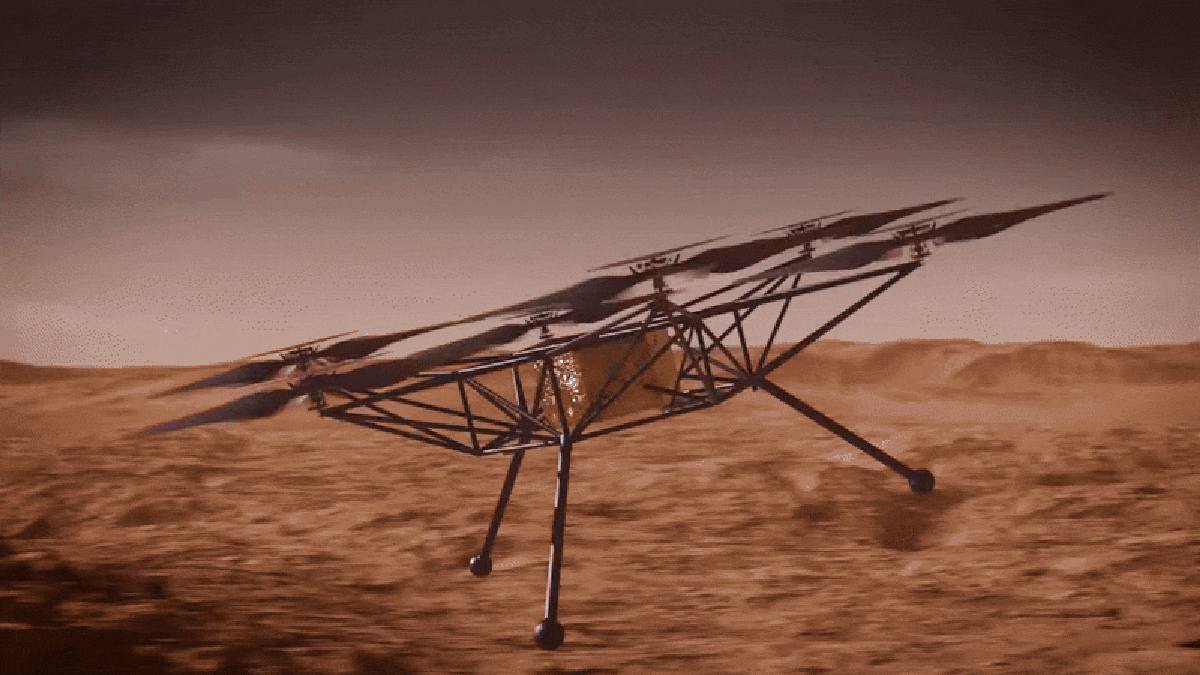NASA carried out a record-breaking feat when it flew a man-made craft on the surface of another planet for the first time with the Ingenuity probe. The American space agency is now preparing for a repeat of this achievement with a new Martian helicopter that could be bigger, more powerful and reach places other rovers could only dream of.
NASA carried out more than 70 flights with the Ingenuity drone on Mars between 2021 and early 2024. The craft offered an incredible view of the Red Planet’s surface, and now NASA has begun designing a next-generation Martian helicopter to continue its work, reports Futurism.
The new aircraft is only in the very early stages of development, but NASA’s Jet Propulsion Lab has shared a video showing the kind of features it could have. This could include six rotors in a similar layout to the kind of drones that have been terrorizing New Jersey in recent weeks. What’s more, the craft will be much, much bigger than its predecessor, as Futurism adds:
The six-rotor monstrosity could turn out to be “the size of an SUV,” according to NASA, allowing it to carry science payloads up to 11 pounds across distances of up to 1.9 miles per Mars day.
According to NASA, the concept “remains in early conceptual and design stages.” Its main task would be to assist scientists in studying even larger swathes of the Martian terrain, at relatively high speeds.
In particular, the Chopper could go where rovers can’t, allowing scientists to get an unprecedented glimpse of inaccessible areas of the Red Planet.
Before the craft can take to the Red Planet, NASA wants to find out just where things went awry for its last unmanned effort. Ingenuity flew more than 70 successful trips on the Martian surface over three years, however the craft crash landed at the start of this year, bringing its adventures on the planet to an abrupt end.
NASA has now released a statement about the issues that Ingenuity faced ahead of the publication of a full report into its shortcomings. The space agency suggested that the crash landing could have come as a result of issues with Ingenuity’s navigation systems, which may have been confused by the “sandy, featureless terrain.” As NASA explained in a statement:
“When running an accident investigation from 100 million miles away, you don’t have any black boxes or eyewitnesses,” said Ingenuity’s first pilot, Håvard Grip of JPL. “While multiple scenarios are viable with the available data, we have one we believe is most likely: Lack of surface texture gave the navigation system too little information to work with.”
The helicopter’s vision navigation system was designed to track visual features on the surface using a downward-looking camera over well-textured (pebbly) but flat terrain. This limited tracking capability was more than sufficient for carrying out Ingenuity’s first five flights, but by Flight 72 the helicopter was in a region of Jezero Crater filled with steep, relatively featureless sand ripples.
With these findings, NASA will be hoping to develop a more robust navigation system that could pilot the new chopper if it ever takes to the skies over the surface of Mars. Before then, NASA just has the small task of returning man to the Moon and creating a new lunar rover with which they can joyride on the lunar surface. No biggie, then.


